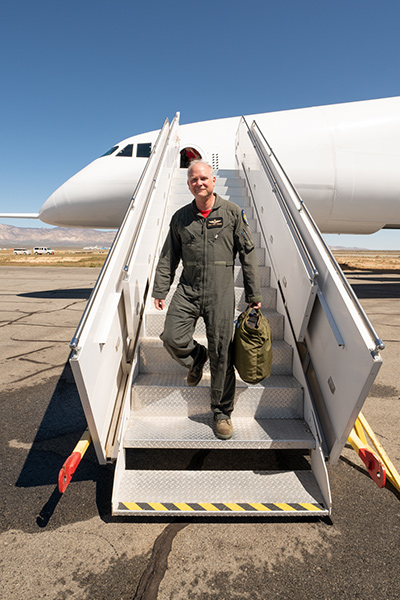Stratolaunch first flight leaves business plan unsettled
By Debra Werner|April 15, 2019
Now that Stratolaunch, the satellite launching plane with a wingspan wider than a football field, has flown, the question is whether this inaugural flight and more tests to come can boost the company’s business plan, which was thrown into question by the death in October of founder Paul G. Allen of Microsoft fame.
Stratolaunch of Mojave, California, declined to discuss the future of the program, but early this year, the company announced it was stopping work on a family of launch vehicles designed to take off from the carrier plane. The company laid off employees associated with that project.
Over the weekend, the company focused on the details of the April 13 flight and memories of Allen.
“It was an emotional moment for me to personally watch this majestic bird take flight and to see Paul Allen’s dream come to life in front of my very eyes,” said Jean Floyd, Stratolaunch chief executive, according to a company transcript of a briefing after the flight. “I had imagined this moment for years, but I’d never imagined the experience without Paul standing next to me.”
Test pilot Evan Thomas and co-pilot Chris Guarente took off from the Mojave Air and Space Port and climbed to a maximum altitude of 17,000 feet and a maximum speed of 305 kph, and landed 149 minutes later at Mojave, according to Stratolaunch. At an altitude of 15,000 feet, they conducted a series of tests, including “checking the pitch response of the airplane, and then practicing some rolls and yaws to make sure we’d be able to line up with the runway like we wanted to. That all felt pretty good,” said Thomas, who works for Burt Rutan’s Scaled Composites company, which built the airplane and is now part of Northrop Grumman. They also simulated approaches before “touching down pretty much where we wanted to on speed,” Thomas said. “The airplane felt really nice on the touchdown, gear felt good.”
Stratolaunch is the world’s largest airplane by wingspan, stretching 117 meters across and extending 73 meters from nose to tail with a maximum gross takeoff weight of 590,000 kilograms. It is propelled by six Pratt & Whitney PW4056 turbofan engines. Plans call for launching one or more Pegasus XL rockets built by Northrop Grumman Innovation Systems. The maximum takeoff weight includes up to 227,000 kilograms of rockets and satellites.
“It is a very complex airplane — the propulsion, the pneumatic system, the hydraulics; they all ran perfectly, which was great,” said Thomas.
Rutan and Allen founded Stratolaunch in 2011 after their suborbital spaceplane, SpaceShipOne, won the $10 million Ansari X Prize in 2004 for reaching space twice within two weeks.
Related Topics
Commercial Spaceflight“It was an emotional moment for me to personally watch this majestic bird take flight and to see Paul Allen’s dream come to life in front of my very eyes. I had imagined this moment for years, but I'd never imagined the experience without Paul standing next to me.”
Stratolaunch CEO Jean Floyd






